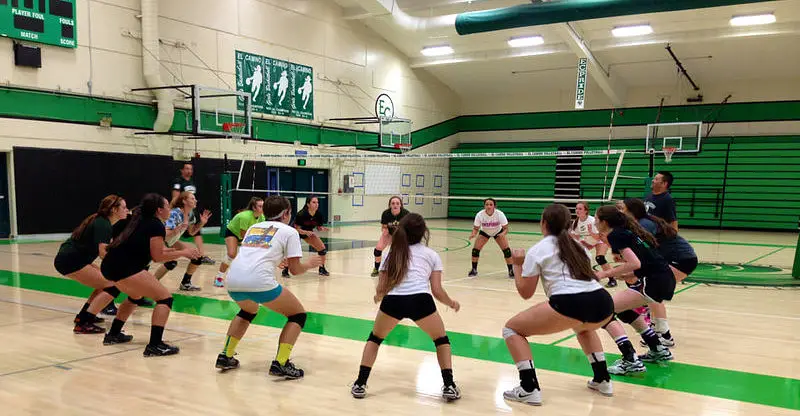4 Steps to Design the Perfect Volleyball Drill
There is no shortage of excellent volleyball drills out there to run through with your players on the court. There often comes a time, however, when you have enough experience and start to think that these drills aren’t quite hitting the spot.
You then consider how you can customize drills more specifically to various aspects of the game your players need to work on to see improvement in as little time as possible.
Therefore, we have listed 5 steps to help you create a perfect volleyball drill every time.
What Are the Objectives of the Drill?
Every volleyball drill needs to start with an end point in mind. You should ask yourself the following questions:
- What skills do I want to improve (hitting, setting, conditioning etc.)?
- Is the drill safe?
- Will the skills learned in the drill directly help and represent what the players will see and use in game situations?
- How can I evaluate whether the drill has the desired effect in improving the players?
Answering these questions ensures that you will be on the right track from the get-go, making it unlikely that you will need to tailor the drill too much down the line.
Learn the Drill
When we say learn the drill, we of course mean that you have to learn the drill inside out yourself so it becomes second nature, but we also mean the same for your players.
Depending on the level of volleyball you teach, ask yourself the following two questions:
- Are you teaching young kids who are completely new to the game?
- Or are you teaching players who have more experience and have run through countless drills over the years?
By asking yourself these questions, you will gain better insight as to whether the players themselves are actually capable of learning the drill.
You need to analyze your players and ensure that they have at least a basic concept of the skills that are important to the drill, such as game positioning, and the correct way to dig and pass using proper form and technique etc.
It’s also important to follow these 3 steps to help players learn the drill:
- Tell the players what the drill consists of
- Tell the players what the purpose of the drill is
- Tell the players how important the drill is to their skills and overall game
Make the Drill as Efficient as Possible
It’s unfortunate that coaches never feel as if they have been given enough time with their players. It shouldn’t come as too much of a surprise though, considering that, even though we love volleyball, kids have more important academic engagements to keep in mind.
However, a good coach doesn’t let the lack of time affect their work. A good coach works to make the drill and ultimately practice sessions as efficient as possible. This can be achieved in the following ways:
- Come fully prepared
- Set a timer for when the drill should start and end instead of “winging it”
- Build in extra time if you need to expand upon the drill and its progressions during practice
Evaluate the Drill
After having run through the drill a few times over the course of a couple of practice sessions, it is a good idea to evaluate the drill by asking yourself the following questions:
- Was the drill a good fit for the players?
- Are their skills likely to improve?
- Did the players enjoy the drill?
If the answer to any of these questions leads to any doubts, don’t think that you have to scrap the drill and go back to the drawing board. You can simply customize the drill as you see fit until the answer to the questions is “Yes.”
Don’t hesitate to ask your players either. After all, the drills are created for their benefit and enjoyment, and their point of view should always be considered, even if you think you know better.
Not only will this improve your standing as a coach, ensuring that their respect for you increases, but it also ensures that they will likely work harder for you in the future, paying back the respect you showed them.
Additional Tip
It is sometimes a good idea to incorporate a reward and “punishment” element of the drill to ensure that players are working to get the most out of a drill.
You need to decide upon what constitutes a suitable reward, as you will know your players the best and what really motivates them.
For the “punishment” side (put it quotation marks because it isn’t really a punishment, rather some added motivation and/or a way to improve another aspect of a player’s game), we suggest something beneficial like performing a couple of laps around the court or doing some sit-ups.

